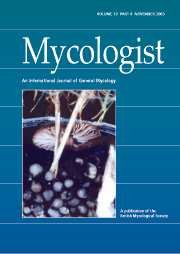Article contents
Molecular windows into the below-ground interactions of ectomycorrhizal fungi
Published online by Cambridge University Press: 15 August 2002
Abstract
Over the past decade the use of molecular techniques has provided new ways to study old questions about how ectomycorrhizal fungi interact with each other and their environment. In their simplest form, these methods enable researchers to identify vegetative stages of fungi that would be difficult, slow, or impossible to identify by morphological or culture-based methods. This has resulted in quantitative views of complex fungal communities, which in turn have revealed new and unexpected patterns in community structure. In addition, molecular methods have been used to identify individual genotypes of fungi. This information has provided insights into the way that particular species of ectomycorrhizal fungi spread in nature. In this article we will mention the basic techniques and briefly discuss some of the findings that have resulted. Advances in this field have recently been comprehensively reviewed for scientific audiences, and we refer readers that have a more technical interest or a need to access the current literature to these reviews (Dahlberg, 2001; Horton & Bruns, 2001).
- Type
- Research Article
- Information
- Copyright
- © 2002 Cambridge University Press
- 3
- Cited by




